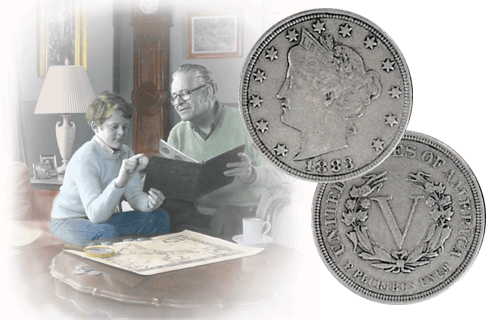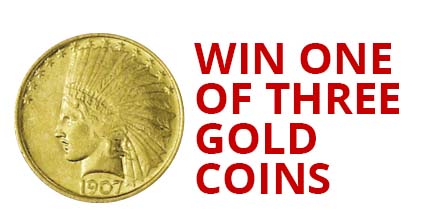A Government Blunder Created the Swindler’s Nickel
Mar 7th 2018

The Coin that Sparked One of the Most Notorious Con Games in American History
In 1883, a handsome new 5 cent nickel entered American commerce. It was the first coin designed by the young Chief Engraver at the U.S. Mint, Charles E. Barber.
After experimenting with the position of the denomination “5 cents” on the coin’s reverse, Barber decided to simply display the Roman numeral “V” for the 5 cent denomination. After all, it was obviously a nickel coin and everyone would know its 5 cent value.
But Barber and other Mint officials failed to take into account the new coin’s fatal resemblance to the then-current U.S. $5 Liberty gold coin. The coins were virtually identical in size; and even the Liberty engravings and surrounding 13 stars were remarkably similar.
A band of swindlers quickly perceived an opportunity for ill-gotten gains. They began to gold-plate many of the new 1883 “no cents” nickels and pass them off on unsuspecting merchants as $5 gold pieces. Some con men filed the edges of the coin to assure an even closer resemblance to the $5 gold piece.
The hustler making a purchase would hand a gold-plated nickel to a merchant, without identifying its value. The “V” on the reverse seemed to confirm the assumed $5 value.
The most famous case involved a deaf mute named Josh Tatum, who passed off many “alchemized” nickels as $5 gold pieces before being apprehended. His lawyer got him off by claiming his client was unable to inform the merchants that it was merely a nickel. That’s when the expression, “I was only joshing you” entered the language!
The Coin that Ended the Scam
After bitter complaints reached the Mint, the “no cents” nickel was quickly recalled (but not before citizens saved some as amusing emblems of government foul-up). The new coin type moved the diminished motto “E PLURIBUS UNUM” above the “V” and added a large “CENTS” below the Roman numeral.
By that time, almost every newspaper reader in America was aware of the “Racketeer Nickel” scam. But the new 1883 “Cents” nickel assured that there would be no doubt of its humble value.
Where to Go From Here
Minting of these “V” nickels ended in 1913 when the Buffalo engraving was introduced. Although rarely seen today, “V” nickels can be affordable additions to your collection. Both the “No Cent” and the “Cent” versions are available in a wide variety of grades. These coins make a wonderful gift to budding collectors as the story they tell is quite irresistible.
Happy coin hunting!

